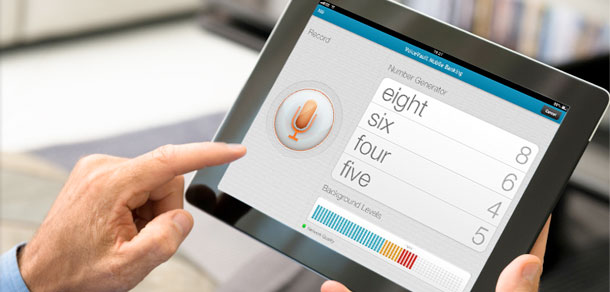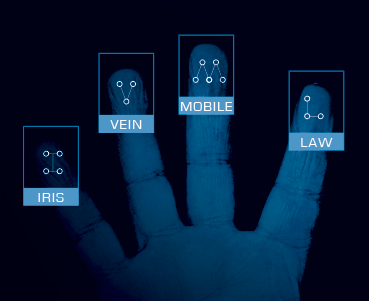Voice biometrics cranks up the volume
Public safety, financial, health find real-world applications
20 August, 2013
category: Biometrics, Corporate, Financial
In the TV show Knight Rider, an agent fights crime with the help of his talking car. While the cars of today aren’t able to converse, voice biometrics could soon enable cars and other systems to recognize voices and authenticate individuals.
“Voice biometrics uses the physical characteristics of the voice process in a human for identity verification,” says Walter Hamilton, senior consultant, ID Technology Partners and vice chairman for the International Biometrics and Identification Association.
The technology works not by simply analyzing a person’s voice, but the process by which one makes the sound of their voice. “It uses matching algorithms that analyze the speech patterns that your body creates, so it’s not about the sound of your voice but the spectrum of sounds that your body is making,” explains Nik Stanbridge, vice president of product marketing at Voice Vault. “That’s from the diaphragm to your lungs, the shape of your throat and your tongue and your larynx and your palate … to make the sound of your voice, you use all of those different components.”
A standup comedian impersonating President Obama might sounds a like him, but the odds are he could not pass a voice biometric test.
“That’s why biometrics is quite different to the analysis of just the sound of the voice,” says Stanbridge. “It’s the matching patterns relating to the spectrum of how the voice is created.”
To use voice biometrics for recognition, a speech sample is used to create a model against which future utterances are compared. For future authentications, the original sample is compared to a present one and scored to see if there’s enough of a similarity, says Hamilton.
The information stored in the computer is not a digital recording of the voice; rather, it’s a biometric template. “It’s a series of ones and zeroes with a complex algorithmic processing of a sample that you hear and understand through your ears into something that the computer understands,” says Hamilton.
A person cannot take a template and recreate someone’s voice with it in order to pretend to be someone else. “You can’t reverse engineer a voice template and recreate the recorded phrase for play back on a tape recorder,” says Hamilton.
Enrolling and verifying voice templates
Creating a voice template requires a voice sample. “You only need 30 seconds of speech to create a voiceprint,” says Emilio Martinez, CEO and co-founder of Agnitio S.L., a company that specializes in forensic and intelligence voice biometric solutions.
Repeating digits provides a large amount of data for voice biometric template creation, Stanbridge says. Enrollment may have an individual repeating four digits multiple times in order to build a good template.
After enrollment, the voiceprint is then tied to an identity and stored in a database. When a person tries to verify himself, he provides the utterance or passphrase. That utterance is sent to the biometric engine, which then compares it with the enrolled voiceprint and verifies whether or not it’s a match, says Stanbridge.
As users interact with the voice biometrics system over time, the technology can adapt and account for changes in an individual’s environment, health and age. “The way that your body makes the sound of your voice doesn’t change very much, even if you’re sick and even as you age,” says Stanbridge.
Voice biometrics technology can also adapt to a voiceprint so that every time a person authenticates, it adds more data to the system, which the algorithms can use to create future matches. It can adapt to verifications made in different environments, such as a landline in an office or a smart phone in a car.
Accuracy rates differ significantly depending on the application. For law enforcement using voice biometrics for surveillance or monitoring phone calls, the accuracy rates can be much lower. “In this case, there’s no enrolled pass phrase, you’re just looking for speech patterns. Certainly the accuracy’s going to be less than in a structured environment where you enroll a pass phrase and then verify against it,” says Hamilton.
Cross-market implications
Law enforcement relies on voice biometrics in a number of ways including the interception and analysis of conversations to be used in court and the building of voiceprint databases for future identification of criminals, says Martinez.
The financial services market leverages voice biometrics particularly for authentication via smart phones. “The financial services industry is moving rapidly toward smart devices. So, whether it is mobile wallets or mobile banking, voice lends itself very well,” says Stanbridge.
The home health care industry also uses voice biometrics for verification. The industry leverages the technology to verify that employees are where they are supposed to be and patients can use it to approve services. “Our agency clients use biometric voice verification when the employee gets to the home, they can have the patient identify themselves,” says Donald O’Rourke, president of Dial-n-Document, which is a partner of Voice Vault. “Now they know that the employee is in the presence of the patient through a biometric voiceprint (of the patient).”
Even though the voice modality has been slow to take off in health care, the industry may yet embrace it as it learns how much fraud and abuse the system prevents or if insurance companies start demanding it as part of operational activities, says O’Rourke.
Health care can also use the technology as one of the authentication factors doctors would need to provide in order to write electronic prescriptions, says Hamilton. “There’s a lot of potential for this technology to be used in a variety of applications.” As for you Knight Rider fans, Hamilton adds, “you can use voice in lieu of a key … speak to the car and it’ll start the engine.”




